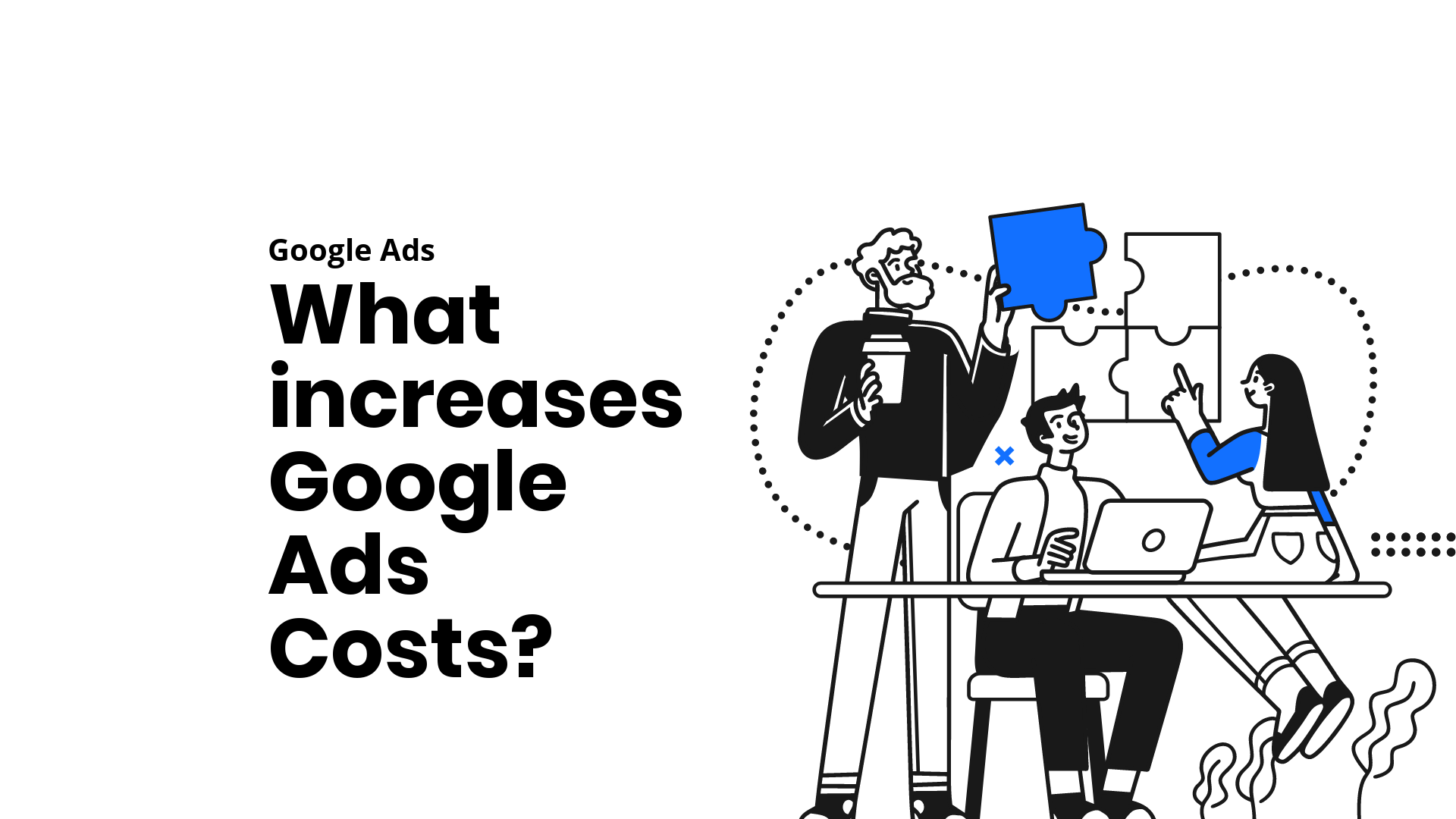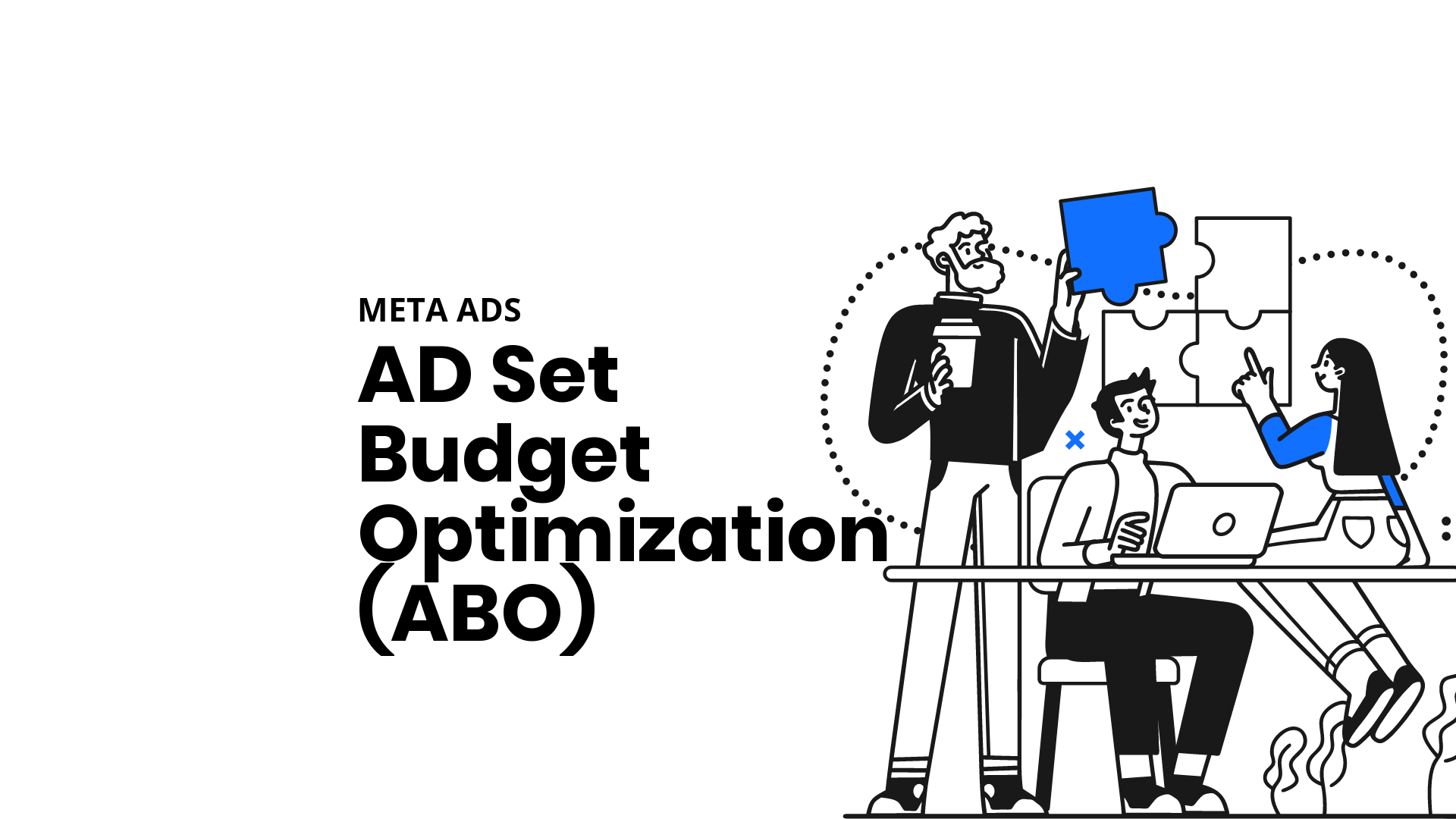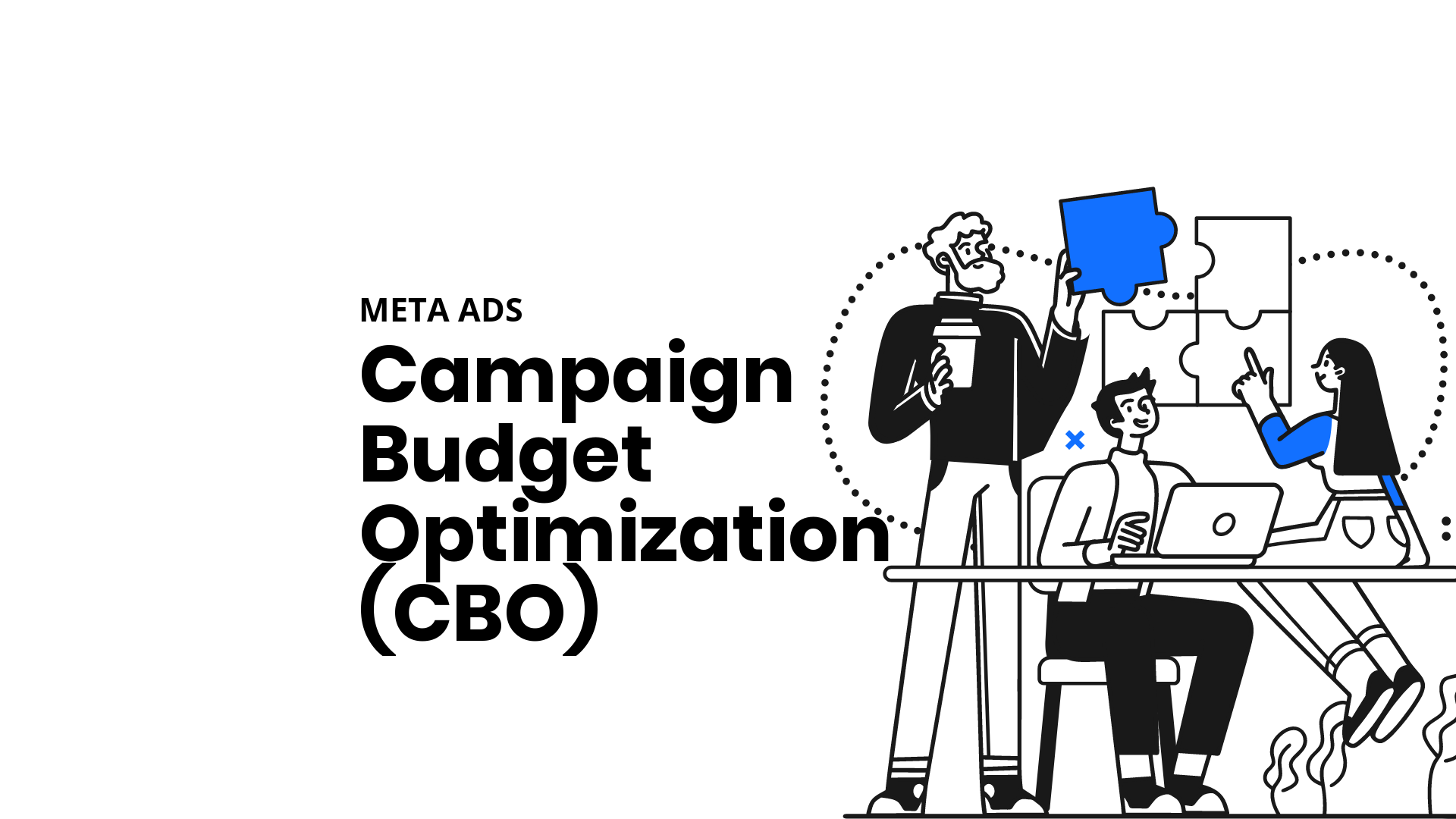Factors that increase Google Ads costs (CPC, CPM, and CPV)

Factors that increase costs (CPC, CPM, and CPV) in Google Ads
Increased competition: As more advertisers enter the auction for the same keywords, the competition increases, leading to higher costs (CPC, CPM, and CPV). This is because the highest bidder, usually, wins the auction, and with more competitors, the bids will be higher
Google’s auction mechanics: Google adjusts auction thresholds and reserve prices (floor price) over time, which can increase the cost for advertisers to maintain an ad’s position. This can raise the effective costs for all advertisers, even those bidding well above the minimum previously
Quality Score: Google’s Quality Score is based on factors like expected clickthrough rate and ad relevance. A higher Quality Score can lead to a lower CPC, while a lower Quality Score can result in a higher CPC
Out-of-order ad promotion: Google may promote lower-ranked ads above higher-ranked ads when the top-ranked ad is ineligible to show in the top spot. This allows Google to still show ads in premium real estate while adhering to their eligibility rules
Changes in ad formats and campaign types: The introduction of new ad formats, campaigns, or ad types can lead to increased competition and higher CPCs
Seasonal trends: Some industries may experience higher costs (CPC, CPM, and CPV) during certain times of the year, such as the holiday shopping season
How to reduce costs in Google Ads
To reduce costs in Google Ads, especially for those on a tight budget, consider the following:
Start Small and Scale Gradually: Begin with a modest daily budget and gradually increase it as you optimize your campaigns. Starting small allows you to test and refine your strategies before scaling up, ensuring efficient use of your budget
Optimize Your Ads: Focus on ad optimization to maximize the performance of your Google Ads account even with limited funds. Eliminate distracting vanity metrics, enable ad extensions to improve click-through rates, and regularly monitor and tweak ad copy for better relevance and quality scores
Effective Targeting and Bidding Strategies: Develop smart targeting and bidding strategies to reach the most relevant audience and get the best return on your ad spend. Select appropriate keywords, use negative keywords to avoid irrelevant searches, implement location and demographic targeting, and employ various bidding strategies based on your campaign objectives
Use Long-Tail Keywords: Utilize long-tail keywords to lower your cost per click (CPC). Long-tail keywords are more specific and targeted, often resulting in lower competition and potentially lower CPCs
Experiment with Bidding Strategies: Consider changing your bidding strategy to optimize costs. Google Ads offers various bidding strategies, including automated options like Enhanced CPC or Target CPA. Experiment with different strategies to find what works best for your campaign objectives
Improve Ad Relevance: Enhance the relevance of your ads by including keywords from the ad group in the ad’s headline and description. This improves ad quality scores, which can lead to lower CPCs and better ad performance
Optimize ad copy in order to reduce Google Ads costs
Add Keywords in Ad Copy: Enhance ad relevance by incorporating keywords from your ad groups into your ad copy. This improves ad relevance and can positively impact Quality Scores, potentially leading to lower CPCs
Use Clear Call-to-Actions (CTAs): Include a clear and compelling CTA in your ad copy to encourage clicks. A strong CTA can improve click-through rates and overall ad performance, which may help reduce CPC costs
Utilize Negative Keywords: Identify keywords that attract high volume but low conversions and add them as negative keywords in your Google Ads list. Negative keywords help filter out irrelevant traffic, improving ad targeting and potentially lowering CPCs
Optimize Ad Content: Focus on creating engaging and relevant ad content that resonates with your target audience. Use persuasive language, power words, and customer-centric messaging to drive more clicks and improve ad performance, potentially leading to lower CPCs
Improve Quality Score: Pay attention to your Quality Score as it impacts the price you pay per click. By optimizing your ads for a higher Quality Score through relevant ad content and targeting, you can benefit from lower CPCs in the long run
Create Tightly Related Ad Groups: Structure your keywords and ad groups by different categories of products or services to enhance relevancy. By creating tightly themed lists of keywords and ad groups, you can improve Quality Scores and potentially lower average CPCs
Adjust Bids Beyond Keywords: Consider factors like locations, devices, and ad schedules when adjusting bids. Analyze which days drive the most traffic and leads, what time of day converts higher, which devices are used most, and which locations drive higher-quality traffic. By adjusting bids based on these insights, you can optimize for efficiency and potentially reduce CPCs
Use tracking to further reduce Google Ads costs
Conversion Tracking: Setting up conversion tracking allows you to measure the effectiveness of your ads in driving valuable actions on your website, such as purchases or sign-ups. By tracking conversions, you can identify which keywords, ads, or campaigns are generating the best results and allocate your budget more efficiently
Optimizing Bidding Strategies: Conversion tracking data provides insights into which keywords or ads lead to conversions. By analyzing this data, you can adjust your bidding strategies to focus more on high-converting keywords or ads, potentially reducing CPCs and improving ROI
Improving Ad Relevance: Tracking user behavior post-click can help you understand which ads are resonating with your audience and leading to conversions. By optimizing ad relevance based on this data, you can improve Quality Scores, which may result in lower CPCs
Identifying Low-Performing Ads: Through tracking, you can identify underperforming ads that have high costs but low conversion rates. By pausing or optimizing these ads, you can reduce wasted ad spend and focus on more effective campaigns, ultimately lowering overall costs
Enhancing Targeting: Conversion tracking data can reveal valuable insights about your target audience’s behavior and preferences. By leveraging this information to refine your targeting criteria, you can reach a more relevant audience with your ads, potentially reducing CPCs and improving campaign efficiency
Strategies to reduce CPC costs
Lower Bids: One of the most basic ways to decrease your Google Ads campaign’s average CPC is by lowering your bids. Adjusting your bids can help control costs and potentially reduce CPC prices while still maintaining visibility
Improve Quality Score: Enhancing your Quality Score by focusing on factors like ad relevance and expected clickthrough rate can lead to lower CPCs. A higher Quality Score indicates better ad performance, which can positively impact your CPC prices
Create Tightly Related Ad Groups: Structuring your keywords and ad groups by different categories of products and services you provide can improve relevancy. By creating highly relevant ad groups with specific keywords and landing pages, you can increase Quality Scores and lower average CPCs
Adjust Bids Beyond Keywords: Consider factors like locations, devices, and ad schedules when adjusting bids. Analyze which days drive the most traffic and leads, what time of day converts higher, which devices are used most, and which locations drive higher-quality traffic. By adjusting bids based on these insights, you can lower CPCs effectively
Use Negative Keywords: Incorporate negative keywords to ensure that your ads don’t target ineffective or irrelevant keywords. Regularly review and update your negative keyword list to eliminate wasted ad spend and improve relevancy, ultimately reducing CPCs
Make Your Ads More Relevant: Focus on ad relevance by aligning keywords with ad copy and landing pages to improve Quality Scores. Emphasize top keywords in headlines and descriptions while ensuring that ads match search intent to enhance relevancy and potentially lower CPCs
Strategies to reduce CPM costs
Know Your Target Audience: Understanding your audience thoroughly by analyzing their demographics, interests, and online behavior can help you create ads tailored to resonate with them. This targeted approach can improve ad relevance and engagement, potentially reducing CPM costs.
Create Eye-Catching Ads: Design visually appealing and engaging ads that capture the attention of your target audience. Compelling ad creatives can increase click-through rates and overall ad performance, which may lead to lower CPM costs
Offer Irresistible Deals: Providing attractive offers, discounts, or promotions in your ads can incentivize users to engage with your content. By offering value to your audience, you can potentially improve ad performance and lower CPM costs
Use all Google Ads networks: Consider diversifying your advertising efforts across various networks in Google Ads. Exploring the networks can help spread your budget effectively and reach a wider audience at potentially lower costs
Improve Click-Through Rate (CTR) with Ad Testing: Conducting ad testing to optimize for higher click-through rates can positively impact ad performance and potentially lead to lower CPM costs. Testing different ad variations helps identify what resonates best with your audience
Think about Location, Device, and Ad Schedule: Consider adjusting bids based on factors like locations, devices, and ad schedules to optimize for efficiency and potentially reduce CPM costs. Tailoring your targeting strategies can help improve campaign performance while controlling costs
Strategies to reduce CPV costs in Google Ads
Link Google Account to Google Ads Account: To achieve a lower CPV in YouTube Ads, it is crucial to link your Google account to your Google Ads account. This connection is essential for optimizing ad campaigns and, in extent, reducing CPV costs
Create Video Remarketing Lists: Develop video remarketing lists based on various ways viewers interact with your videos. This includes users who watch, subscribe, or like your videos. By targeting these specific lists, you can reach viewers who have already shown interest in your content, potentially reducing CPV
Utilize Advanced Campaign Settings: Take advantage of advanced campaign settings such as setting schedules and frequency caps for ads. By retargeting ads to specific lists and utilizing advanced settings effectively, you can optimize your campaigns for lower CPV
Target Keywords & Topics: Targeting specific keywords and topics can help reach the right audience effectively. By focusing on relevant keywords and topics, you can improve ad performance and potentially lower CPV costs
Create Vertical-Friendly Video Ads: Consider creating vertical-friendly video ads as mobile users prefer vertical videos over horizontal ones. By adapting to user preferences, you can capture more attention and potentially reduce CPV costs
Opt into Google Video Partners: Opting into Google Video Partners can extend the reach of your videos to other sites and apps, increasing exposure and potentially driving more views at a lower cost
Bid Management Strategies: Effective bid management strategies are crucial for optimizing CPV in video campaigns on Google Ads. Setting the right bids ensures that your ads are seen by the most relevant viewers at the lowest cost, maximizing ROI
Targeting Optimization: Optimize targeting settings by researching audiences, selecting appropriate targeting options, setting bids, and making adjustments as needed. Finding the right combination of targeting options can maximize reach and engagement while minimizing CPV costs
Mistakes that will inflate Google ads costs
Using the same ad copy for years: Not updating ad copy regularly can lead to decreased relevance and lower Quality Scores, resulting in higher CPCs
Not adapting to changes in the auction: Changes in the number of competitors, their bidding strategies, and Google’s algorithms will impact costs. Advertisers need to stay agile and adjust their strategies accordingly
Relying too much on automatic bidding: Setting everything to automatic bidding can increase costs across the board. While this may be fine if important KPIs like CPA and ROAS are maintained, it’s essential to monitor and adjust strategies as needed
Not optimizing for efficiency in conversion rates: Inefficient conversion rates can drive up bids, leading to higher CPCs. Advertisers should focus on improving conversion rates to help control costs
Lack of diversification in marketing: Focusing solely on Google Ads without diversifying into other marketing channels like Facebook for quality video content can limit opportunities to reach audiences at lower costs
By implementing these strategies such as starting small, optimizing ads, targeting effectively, using long-tail keywords, experimenting with bidding strategies, and improving ad relevance, you can reduce costs in Google Ads while maximising advertising efforts within a limited budget
Top posts in Google Ads
How to audit Google Ads campaigns


